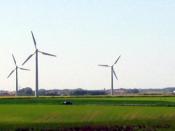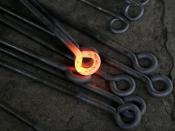Passive Solar Energy Design of Structures in respect to heat effectiveness Heat effectiveness in any architectural design is always a top concern that an architect must encounter. Without this key element, structures would be totally inefficient to heat, not to mention extremely expensive. In order to design a heat efficient building we must first understand where heat is lost or where cold air enters the structure in question. Passive solar design refers to the use of the sun's energy for the heating and cooling of living spaces. In this approach, the building itself or some element of it takes advantage of natural energy with physics characteristics in materials and air created by exposure to the sun. Passive systems are simple, have few moving parts, and require minimal maintenance and require no mechanical systems. The reason I chose to discuss this matter is because the physics involved in this research has relevance to my desired goal of becoming an architect.
My research will first be to prove the materials that are best for insulation and which materials are not. Second, I will try to prove where heat is most likely to escape in a structure by researching and explaining efficient designs. This, in turn, will provide information to where it is necessary to add more insulation to a particular structure.
It has been proven time and time again that solar energy plays a crucial part in the heating of any structure regardless of its design. The intensity of solar energy is almost an exact constant only varying in energy about 0.2 % every 30 years. This intensity can vary of course when the solar photons interact with different conditions in the atmosphere. This energy from the sun can be converted so that it is able to heat a structure in many...


